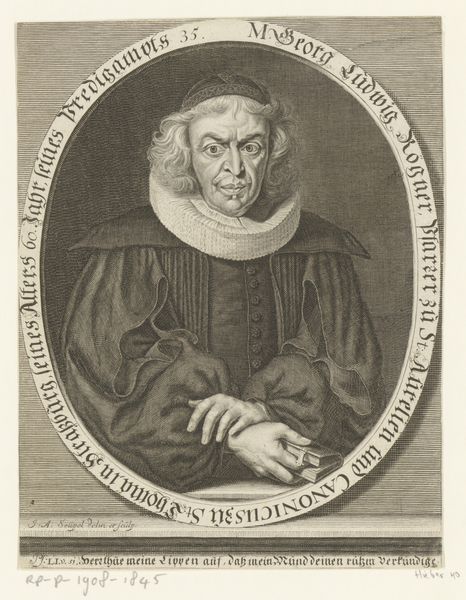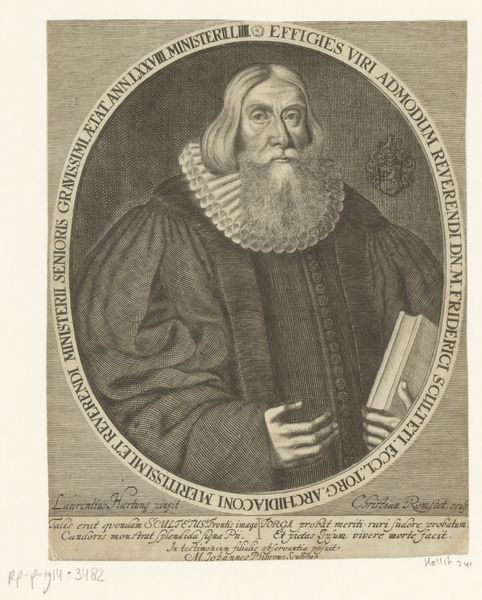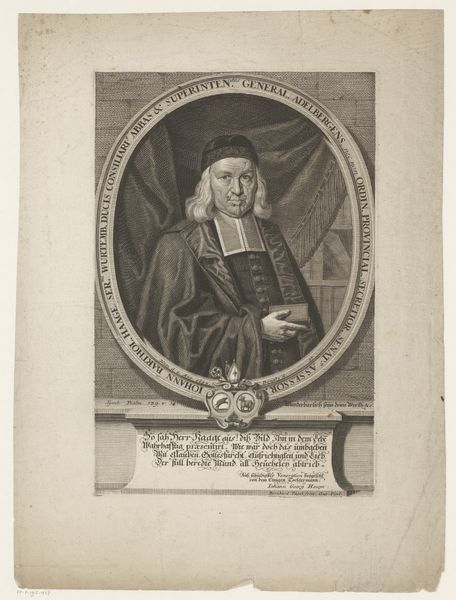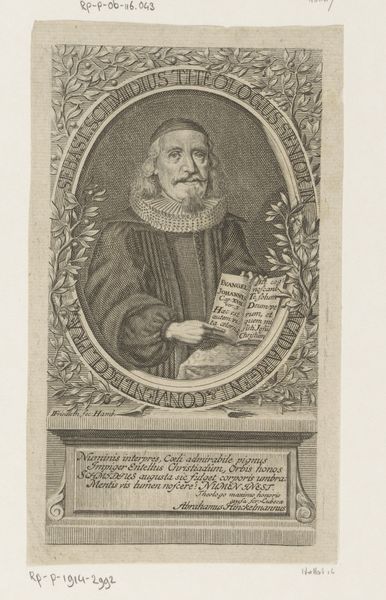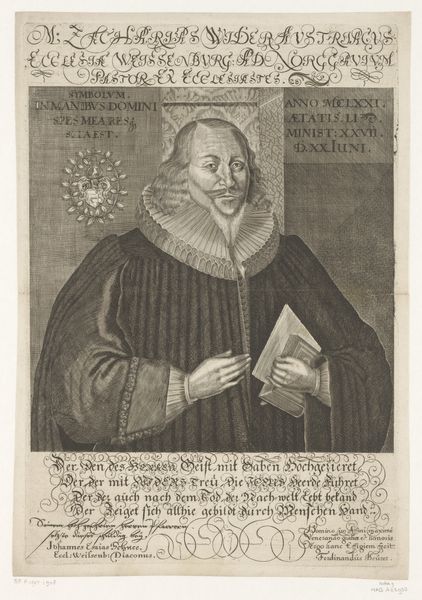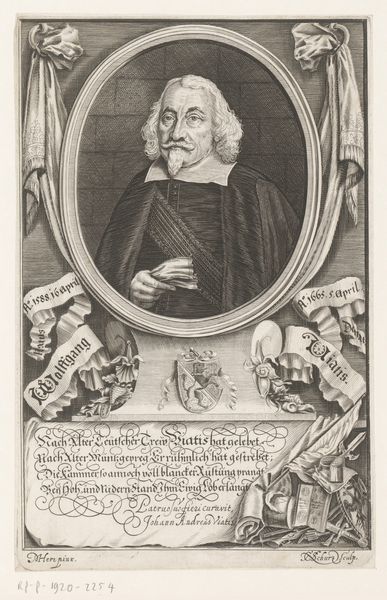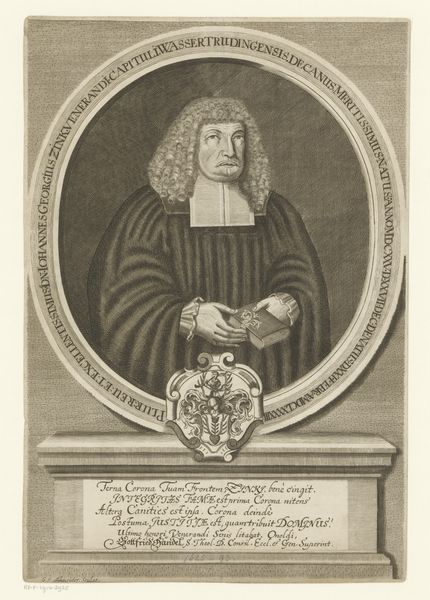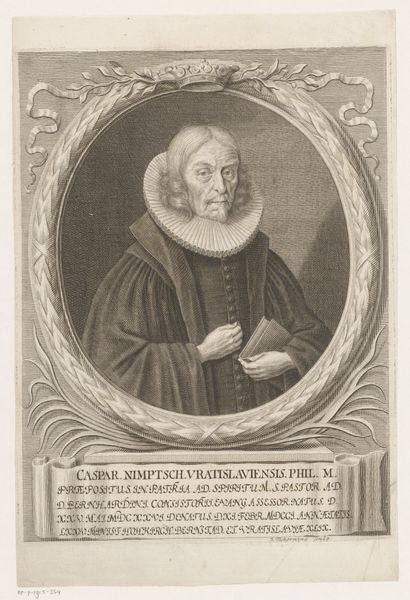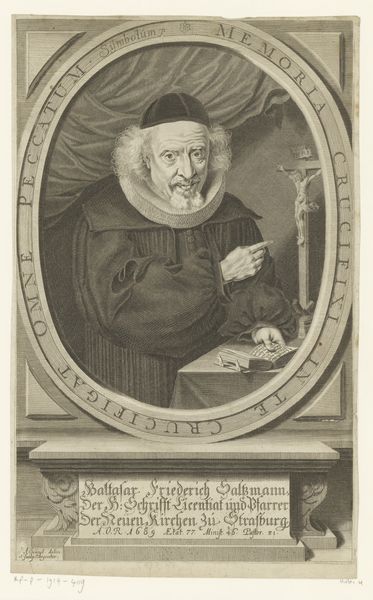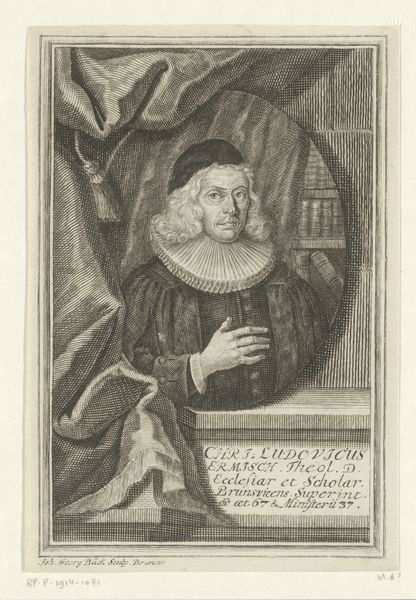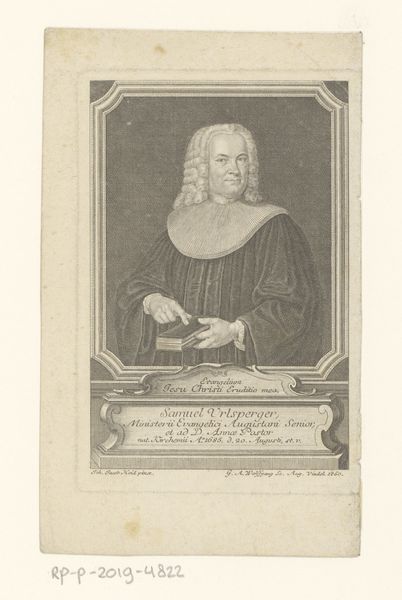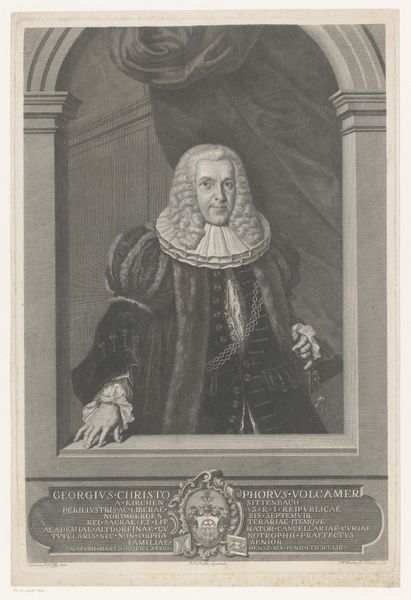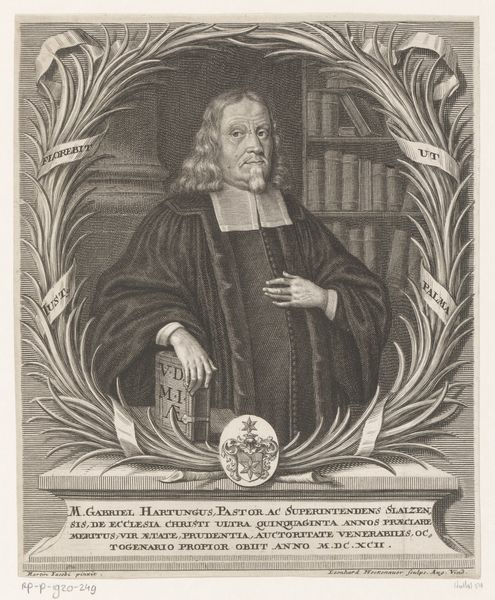
print, engraving
#
portrait
#
baroque
# print
#
old engraving style
#
history-painting
#
academic-art
#
engraving
Dimensions: height 302 mm, width 193 mm
Copyright: Rijks Museum: Open Domain
Curator: Look at this impressive engraving, "Portret van Johann Lorenz Pfeiffer" dating back to 1740, now held in the Rijksmuseum. The artist, Georg Heinrich Werner, has rendered Pfeiffer, a Professor Publicus, in remarkable detail. Editor: My first impression is one of scholarly gravitas. The portrait possesses a serene quality, likely intended to communicate authority and wisdom. The book and elaborate drapery lend an air of formality. Curator: Exactly! Consider the labor involved. Each line of the engraving required precise cuts into a metal plate, reflecting not just artistic skill, but also countless hours of craft and the economic conditions that enabled such a commission. The texture is achieved entirely through lines. Editor: True. But beyond that process, I see powerful symbolism at play. The book in his hands, presumably of religious text, is central. It symbolizes Pfeiffer’s piety, and his dedication to faith. Notice the ornately carved frame around him-- it emphasizes the subject's importance within his time and culture. Curator: I agree on the importance of the book. However, beyond representing personal devotion, this printed book also signifies knowledge production and dissemination during the period. Engravings, as relatively accessible media, allowed for wider distribution of portraits like this. A contrast to paintings limited to elite circles. Editor: Interesting perspective! The book may indeed be a subtle statement about Protestant accessibility. Even his rather severe clothing plays a part. It points to modesty and a rejection of ostentatious displays that were, in fact, popular Baroque artistic conventions, suggesting a focus on function over superficial beauty. Curator: It is equally compelling to examine the economic function served by these depictions and dissemination during this time. Portraits affirmed class and societal hierarchies while functioning within specific economic infrastructures of production. This engraver depended on making multiple impressions in order to make a profit. Editor: A portrait imbued with societal and spiritual weight. By understanding its symbols and cultural context, we uncover deeper narratives beyond the immediate surface of the subject. Curator: By examining the material conditions of production and circulation, we begin to understand the true value and purpose of the artwork in the period it was created.
Comments
No comments
Be the first to comment and join the conversation on the ultimate creative platform.
